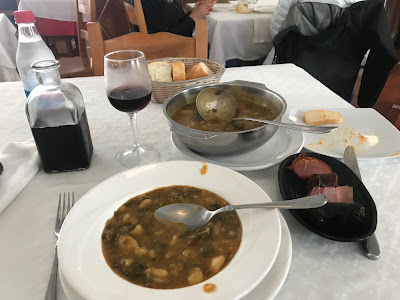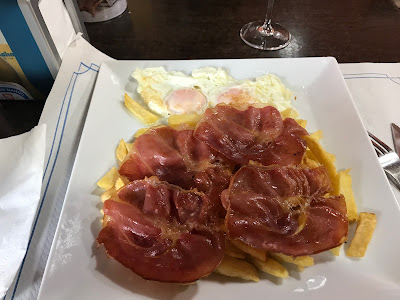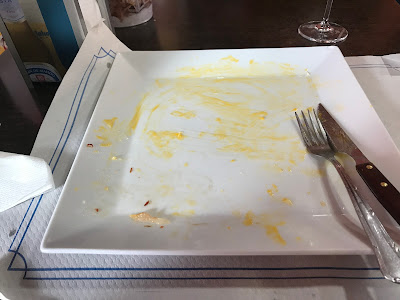From the desk of mr mike:
Postscript:
The Life of a Pilgrim on the Camino

My wife sent me instructions before I
departed from Spain. Don’t talk about it
when you return, it will bore everyone.
Well, I feel I have to get it off my chest, just in case anyone wonders
what its all about.
There are several Caminos criss-crossing
southern Europe, all leading to Santiago (“St James”) the home of the remains
of St James in the magnificent cathedral of Santiago. They were never intended
as a holiday. They were always intended as a test of the Pilgrim; primarily a
test of devotion, and to that end it is a physical and a mental test. And it
certainly is a challenge
The physical part is obvious – not many can
say that they have walked 30kms in a day, never mind done that every day for
over a month carrying everything on their back over demanding terrain.
But the mental aspect is a challenge also,
and initially unexpected. Inevitably,
there will be problems; injuries (blisters, sprains, ankles, knees, are all common), and its necessary to push on regardless. So, the first part of the
mental challenge is to overcome these physical problems and press on.
But a deeper mental challenge emerges as
the Camino progresses. From walking alone all day, in silence apart from bird
song and the wind in the trees, with only your mind for company. It induces a
form of meditation; self-examination of one’s life. I can only report my
personal experience – it's quite profound. The experience gets stronger as the
Camino progresses. It is not necessary
to be religious (I’m not) to experience these spiritual aspects.
Both the physical and mental challenges are
compelling, which is why I have now completed five Caminoes.
Then there are the inevitable housekeeping
aspects of every day life on the trail. Where to sleep; where to eat; how to
avoid problems; how not to get lost – all in a foreign country. On your own, its necessary to keep your wits
about you at all times. A simple mistake can lead to a world of problems. Pre-planning
and preparation is essential, but there will inevitably be unknown-unknowns to
overcome.
As an example, as I learned only in the
last couple of days: a golfing friend of
mine was doing the Camino Française at the same time as I was doing my
Camino. It is usual to leave your boots at
the entrance of the albergue (more shortly). In the morning at first light he
picked up what he thought were his boots.
It was only after 2 hours he realised his feet were hurting and he had
the wrong boots. He cut out the toes of the boots, but ended up having to
abandon his Camino. A one in a million unknown.
In Spain, the Camino is well regarded for
historical and religious reasons, but also for the revenue that it brings to
rural areas. There is a network of
“albergues” along the route that provide Pilgrim accommodation. There are
municipal (i.e. council-run) albergues,
privately-run albergues, and “refugios” run by religious orders. Some
are “donativo” (i.e. free, but you can donate if you wish) but most cost 10-15
euros per night. Generally, the accommodation is good quality: a bunk bed with
disposable cover sheets and sometimes blankets (so its necessary to carry a
sleeping bag); always hot showers (essential after a hard day – orgasmic
almost); usually somewhere to wash clothes (washing machines or at least hand-washing facilities) and often a kitchen where you can prepare food. Always Wi-Fi is available.
 |
| View from my top bunkbed. |

 |
| In Comillas |

Waiter! There’s a crab in my fish soup! The soup was delicious.

 |
| Before |
 |
| After |


My pilgrim credential with all its stamps from overnight stays. There are actually more stamps than stays (31) because in the last 100kms it is necessary to get 2 stamps each day.
5 comments:
Not to diminish the zen of it all, but you could have called this post The Pilgrim's Plates.
Thank you a fascinating insight, mr mike. Bravo.
v./
Great to read, Mr Mike. A serious achievement of body and soul.
Thank you, mr mike, for taking the trouble to share your amazing pilgrimage with us. Much appreciated.
congratulations on your sensational sisyphean achievement, mr mike: it all makes the ridgeway look like a stroll in the local park.
where next?
Thank you all for the kind words.
As to what next, Mr ultrapox: its too soon to say, but this last jaunt took me to my limits, so it will have to be something a little easier.
Post a Comment